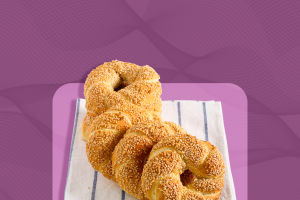The history of wafer cookies can be traced back to 17th century Europe. In Archimagirus Anglo-Gallicus: Or, Excellent & Approved Receipts & Experiments in Cookery, published in London in 1658, there is a description of making wafers.
At that time, it was beaten with egg white and flower-scented water (such as rose water), added flour to make a batter, seasoned with salt and sugar, spread on a hot iron plate, and baked into thin and crisp wafers.
In different parts of Europe, there are traces of wafers, and many different dishes have changed. Holland, Belgium, Poland, and other places have historical origins with wafers; Britain and France have brought wafers to the noble table in the early days, becoming the best companion for chocolate and ice cream, making an expensive meal. An airy dinner, complete with a wacky textured wafer.
The light and crunchy texture is believed to be the main factor in its appeal. But in fact, it was not until the appearance of sandwich wafers that she officially became the world's dessert darling.
Sandwich wafers were created as consumer goods in 1898 by Josef Manner, the founder of Manner. The original name of sandwich wafers is Neapolitan wafers.
The word Neapolitan has the same origin as the name of "Napoleon cake" that everyone often eats today, and both refer to the meaning of "thousand layers" (translating Neapolitan into Napoleon is a mistake, but this is off-topic.
Believe that every kid who loves snacks has eaten wafer biscuits. Generally speaking, wafer biscuits are sweet and nutritious, so many people fall into them and cannot extricate themselves.
Wafers have a mellow and mellow taste, and the taste is fluffy and crisp. Although the tastes of wafers are changing today, the taste of wafers is also ever-changing.
Only cake biscuits can be divided into layers. Of course No! Here is a highly recommended wafer that can give you a sense of happiness - Swiss Kagi Chocolate Wafer, it's really delicious!
Kagi is a well-known Swiss chocolate wafer brand with a history of more than 80 years since its inception. Kagi runs through the childhood of every Swiss child. The crispy wafers and the mellow chocolate filling create an unstoppable deliciousness, and you can appreciate its rich taste in just one bite.
With the ultimate attention to detail, the creation of exquisite Swiss chocolate wafers brings wonderful enjoyment to people. In Switzerland, Kachi can be found everywhere, whether in restaurants, on the slopes of the ski slopes, or in the alpine huts you pass by while hiking.
Whether at work or leisure, take a bite of sweet and crisp, and your mood will immediately fly.
This wafer consists of five layers: chocolate + milk layer + wafer + hazelnut chocolate sauce + wafer. The entrance is crisp and smooth, sweet but not greasy, nutty, and sweet, with just the right level of sweetness.


